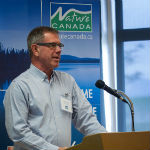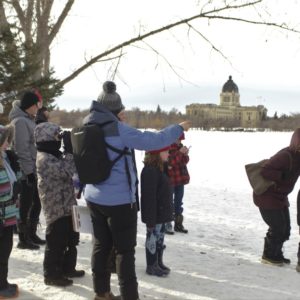Political Leadership Needed to Protect Grasslands

Stephen Hazell
Director of Conservation
and General Counsel
The prairie grasslands in Canada are ecologically invaluable – they are one of the most endangered ecosystems in Canada and globally. In Saskatchewan, more than 800,000 hectares were restored and managed for ranching and nature conservation since the 1930s through the federal Community Pasture Program. Unfortunately, the previous federal government cancelled the program in 2012 and has been transferring the management of these precious lands to the government of Saskatchewan, thereby putting these grasslands at risk.
Saskatchewan’s current policy is to lease or sell these lands to the pasture patrons (ranchers) for livestock production but without any support for conserving the numerous species at risk or preventing the spread of invasive species. As well, the 5 million dollars in annual revenue from surface leases (i.e., oil and gas production) will also be turned over to Saskatchewan management. These pastures store around 150 million tonnes of carbon when they are properly managed; some of this carbon could be being released into the atmosphere if the pastures are overgrazed or converted to monoculture agriculture or oil and gas development.
If you recall, Canada is committed by international agreement to protecting at least 17% of terrestrial areas by 2020, and the 800,000 ha. in Saskatchewan community pastures count towards this figure. With no conservation efforts in place, these grasslands will not be counted towards Canada’s target – which is a significant amount of land not being protected.
In June, Nature Canada, Nature Saskatchewan and several ranching and other nature groups jointly submitted a proposal to Agriculture Minister Lawrence MacAulay to bring light to the matter and to resolve these grassland issues. In this proposal, we called on the Minster to:
- Put a pause on the transfer on the remaining pastures and allow time to consider the conservation options;
- Establish an independently managed trust or other mechanism to provide sustainable funding to support the protection and conservation of all the community pastures; and
- Review options to maintain federal ownership of the remaining pastures and to allow the application of 5 million dollars in surface lease revenues to fund the trust.
To read more on the issue, click here.



